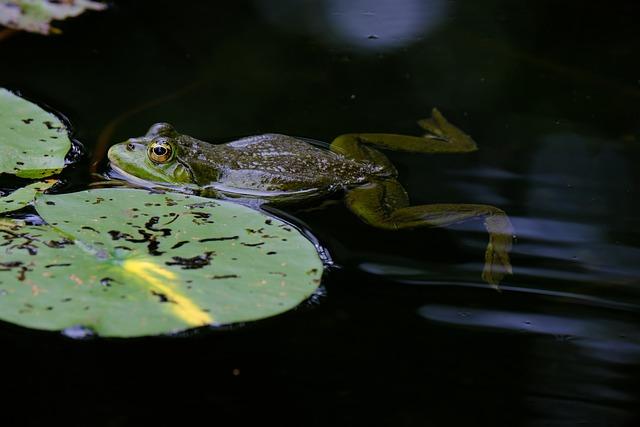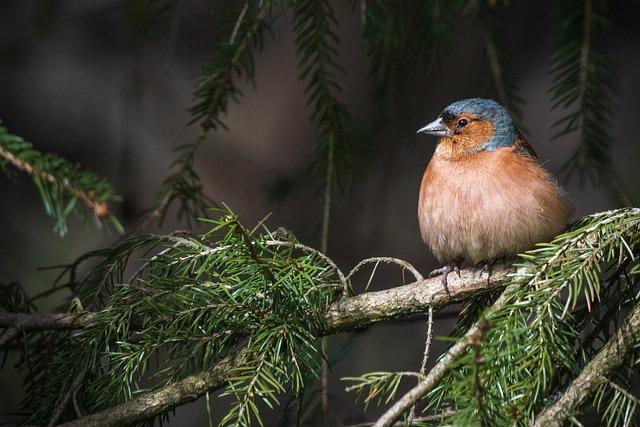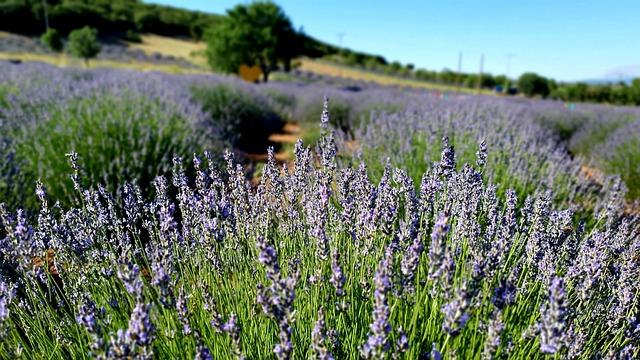Identify: A Jump Ahead in Record Madagascar’s Frog Inhabitants
In a groundbreaking construction for biodiversity analysis, a contemporary learn about has significantly complicated the working out of Madagascar’s wealthy amphibian fauna. Because the island country’s distinctive ecosystems face expanding threats from weather exchange and habitat destruction, researchers have unveiled an in depth stock of its frog inhabitants, highlighting no longer handiest the range however additionally the fragility of those necessary species. This thorough record, featured in a learn about revealed on Nature.com, includes a outstanding array of frogs endemic to Madagascar, losing mild on their ecological roles and conservation statuses. The analysis represents a pivotal step towards bettering conservation methods and fostering world consciousness of Madagascar’s irreplaceable herbal heritage. As scientists delve into the complexities of those amphibious population, the findings be offering each a party of nature’s complexity and a clarion name for pressing preservation efforts.
A Step forward in Biodiversity Analysis on Madagascar’s Frogs
Fresh discoveries spotlight the unbelievable frog variety discovered on Madagascar,a hotspot for amphibian species. Researchers have documented over 300 distinctive frog species, many of that have been unknown to science till now.Those findings underscore the essential function Madagascar performs in world biodiversity, as neatly because the pressing wish to preserve its fragile ecosystems. The analysis was once spearheaded through a global staff that applied state of the art genetic research and box surveys in far off spaces of the island, revealing new insights into the evolutionary historical past and ecological niches occupied through those amphibians.
Key highlights from the learn about come with:
- Top Endemism: Roughly 90% of Madagascar’s frogs are endemic, making them distinctive to the island.
- Various Habitats: Frogs inhabit a vary of environments, from rainforests to arid areas, showcasing outstanding adaptability.
- Conservation Urgency: Many species face threats from habitat destruction, weather exchange, and invasive species, prompting fast conservation movements.
| Species Identify | Standing | Habitat |
|---|---|---|
| Boophis madagascariensis | Endangered | Rainforest |
| Gephyromantis cornuta | Prone | dry Wooded area |
| Platymantis spp. | information poor | More than one Habitats |
This new analysis no longer handiest enriches our working out of Madagascar’s amphibian variety but additionally reinforces the decision for enhanced coverage measures for those species. Insights from the learn about can information long term conservation efforts and policy-making, emphasizing the need for tasks that prioritize habitat preservation and recovery. With the emerging threats to their habitats, those efforts are an important to making sure the survival of Madagascar’s distinctive frog species for generations to come.
Key Findings from the Fresh Complete Frog Review

The contemporary complete evaluate of madagascar’s frog inhabitants has exposed notable insights that underscore the significance of conservation efforts on this biodiversity hotspot. Significantly,researchers have known over 300 distinct frog species,with greater than 100 species being endemic,which means they’re discovered nowhere else on Earth.This wealthy variety is attributed to the island’s distinctive ecological niches, characterised through various altitudes, climates, and microhabitats. Key findings expose:
- New Species Discoveries: A number of frog species up to now unknown to science were documented, emphasizing the will for persevered exploration.
- Threatened Species: A good portion of the endemic frogs face habitat loss because of deforestation and weather exchange, with just about 30% of species labeled as endangered.
- Conservation Hotspots: Explicit areas such because the japanese rainforests and the dry western spaces were highlighted as essential zones for pressing conservation movements.
Along with those findings, researchers have evolved an in depth framework to higher track and give protection to Madagascar’s frog populations. This framework will facilitate focused conservation tasks primarily based on species distribution and habitat personal tastes. The learn about additionally emphasizes the will for collaboration between native communities and world our bodies to foster enduring practices that safeguard those amphibious treasures. A summarized evaluate of the findings associated with species standing is supplied within the desk beneath:
| Species Standing | Choice of Species | Conservation Standing |
|---|---|---|
| Endemic to Madagascar | Over 100 | Important |
| Threatened Species | 90 | Endangered/Prone |
| New Species | 15 | Now not But Assessed |
implications for Conservation Efforts and Ecosystem Well being

The new complete evaluate of Madagascar’s frog inhabitants unveils essential information that may just reshape conservation methods around the island. Through figuring out and record those amphibian species, researchers can now prioritize efforts primarily based at the particular ecological wishes of every staff. This nuanced working out promotes focused approaches, making sure that assets are allotted successfully to fight the threats confronted through those species, together with habitat loss and weather exchange. Key targets for conservation tasks would possibly come with:
- Habitat recovery and coverage: Safeguarding herbal habitats from deforestation and encroachment is necessary for keeping up wholesome ecosystems.
- Group engagement: Involving native populations in conservation efforts can strengthen stewardship and foster sustainable practices.
- Analysis investment: further assets will have to be channeled into clinical research that track frog well being and environmental adjustments over the years.
The consequences of those findings lengthen past frog populations; they spotlight the integral function amphibians play in ecosystem well being. Frogs function signs of environmental high quality and biodiversity, and their presence can sign the full state of native ecosystems. Preservation of those species would possibly result in cascading advantages, together with:
- Enhanced biodiversity: Protective frogs can lend a hand deal with the subtle steadiness of different species in their ecosystems.
- Stepped forward water high quality: Frogs give a contribution to nutrient biking in aquatic environments, thus reaping rewards different natural world.
- Local weather resilience: Various ecosystems are much more likely to resist climate-related adjustments, supporting balance.
Methods for Protective Endemic Species in Madagascar

To verify the survival of Madagascar’s distinctive amphibian inhabitants, a multi-faceted manner is very important. Habitat recovery performs a essential function in this technique, that specialize in the reforestation of degraded spaces and the security of wetlands, which can be necessary for the frogs’ breeding cycles. As well as, establishing protected areas can safeguard essential habitats from deforestation and construction. Native community engagement may be important, as teaching citizens concerning the ecological significance of those species can foster a way of stewardship and advertise sustainable practices. Through incorporating standard wisdom with trendy conservation tactics, we will create a extra holistic option to retaining those outstanding creatures.
Moreover, tracking and analysis are an important for working out inhabitants dynamics and well being. Through enforcing citizen science tasks, native colleges and communities can take part in data collection, which inspires environmental consciousness and appreciation.Any other layer of coverage can come from legislative measures aimed toward regulating unlawful natural world business and implementing stricter consequences for offenders. Collaboration with world conservation organizations will be necessary in offering assets and experience to bolster Madagascar’s efforts. In combination, those methods shape a complete framework to give protection to the rustic’s endemic frogs and make sure their long term within the wild.
The Function of Native Communities in Sustainable Frog Conservation

Native communities play a pivotal function within the conservation of frog species in Madagascar, appearing as stewards of their distinctive ecosystems. Attractive those communities fosters a deeper working out of the ecological importance of frogs, which are incessantly lost sight of. Thru training and consciousness systems, locals are inspired to comprehend the biodiversity surrounding them, resulting in a better dedication to conservation efforts.Key tasks come with:
- Consciousness campaigns: Informing communities concerning the threats frogs face,such as habitat destruction and air pollution.
- Ecotourism: selling sustainable tourism that highlights the significance of frogs and their habitats.
- Group-Led Conservation systems: Empowering locals to create and implement protecting measures for frog habitats.
Additionally, partnerships between conservation organizations and native leaders strengthen the have an effect on of conservation methods. Through involving communities within the analysis and tracking of frog populations, citizens acquire possession of the conservation narrative. This collaborative manner no longer handiest yields precious information but additionally fosters a way of pleasure in native biodiversity. A a success style can be noticed in collaborative workshops the place:
| Workshop Focal point | Group Engagement | Anticipated Consequence |
|---|---|---|
| Habitat Recovery | Involving locals in planting local crops | Stepped forward frog habitats |
| Knowledge Assortment | Coaching locals to observe frog populations | Enhanced inhabitants information |
| Training Techniques | Workshops for colleges on frog biology and ecology | Larger adolescence involvement in conservation |
Long run Instructions for amphibian Analysis and Environmental Coverage

As researchers delve deeper into the varied ecosystem of Madagascar’s frogs, a number of cutting edge avenues for long term analysis are changing into obvious. The attainable to make use of complicated genetic tactics, equivalent to genomics and bioinformatics, would possibly permit scientists to discover up to now hidden relationships amongst species, losing mild at the evolutionary historical past of those amphibians. Key spaces for exploration come with:
- Inhabitants Genetics: Working out how environmental adjustments impact genetic variety.
- Behavioral Ecology: Investigating mating calls and reproductive methods of more than a few species.
- have an effect on of Local weather Exchange: Assessing how emerging temperatures would possibly regulate habitats and breeding patterns.
Parallel to investigate developments, it’s an important that environmental insurance policies evolve to higher give protection to those species. Coverage-makers will have to prioritize sustainable land use and habitat preservation methods to mitigate threats from deforestation and agricultural growth. Organising secure spaces and implementing stricter regulations round business can considerably assist within the conservation of Madagascar’s distinctive amphibian inhabitants.Under is an easy desk outlining really helpful coverage movements:
| Coverage Motion | Description |
|---|---|
| Safe Spaces | Designate zones the place human task is restricted to maintain ecosystems. |
| Law | Put in force rules to curb unlawful natural world business. |
| Group Engagement | Contain locals in conservation efforts via training and financial incentives. |
Concluding Remarks
the new developments in cataloging Madagascar’s numerous frog inhabitants constitute a vital jump ahead in our working out of this distinctive ecosystem. As researchers discover the staggering selection and complexity of those amphibians, it turns into more and more transparent that Madagascar’s frogs cling necessary clues to the well being in their atmosphere and the wider implications of biodiversity loss. This complete record no longer handiest highlights the pressing want for conservation efforts but additionally underscores the significance of collaboration amongst scientists, policymakers, and native communities in safeguarding Madagascar’s herbal heritage. Through proceeding to record and learn about those outstanding species, we transfer nearer to making sure their survival and, through extension, the preservation of the wealthy biodiversity that defines this island country. as we mirror on the findings offered on this article, it is crucial that we stay vigilant and proactive in our dedication to protective Madagascar’s irreplaceable ecosystems for generations to come back.
Source link : https://afric.news/2025/03/01/a-leap-forward-in-listing-madagascars-frog-population-nature-com/
Writer : Caleb Wilson
Put up date : 2025-03-01 23:27:00
Copyright for syndicated content material belongs to the connected Source.



